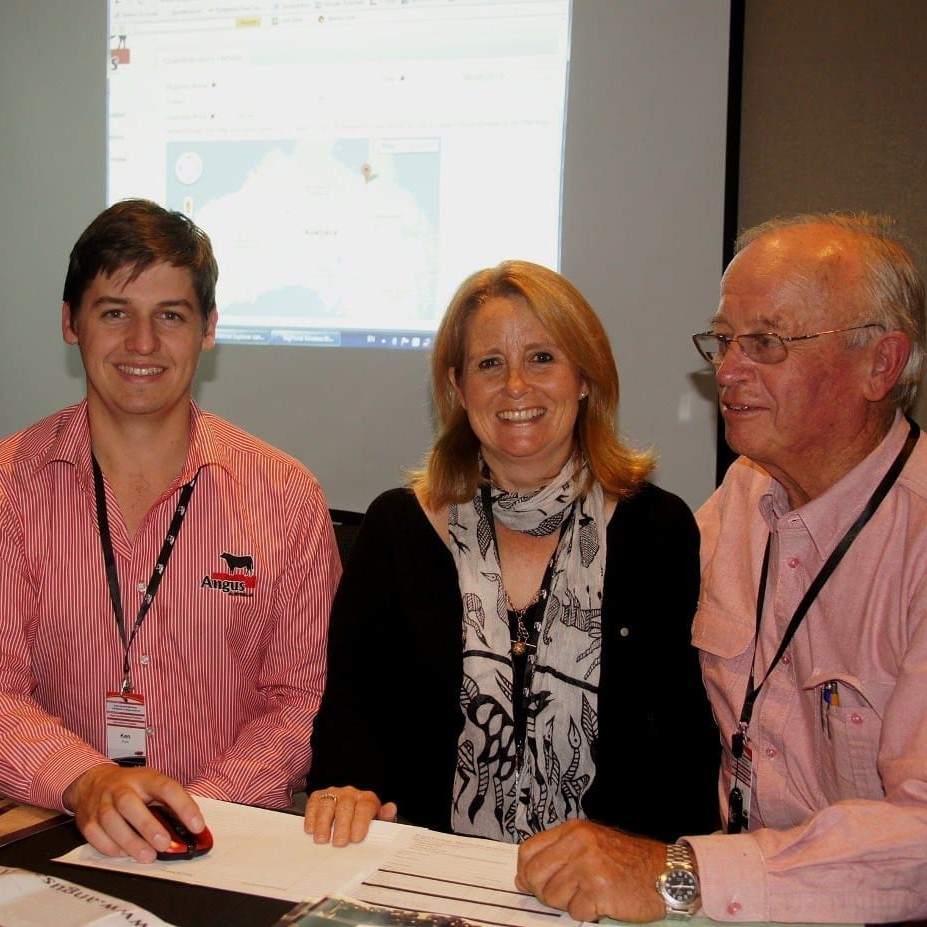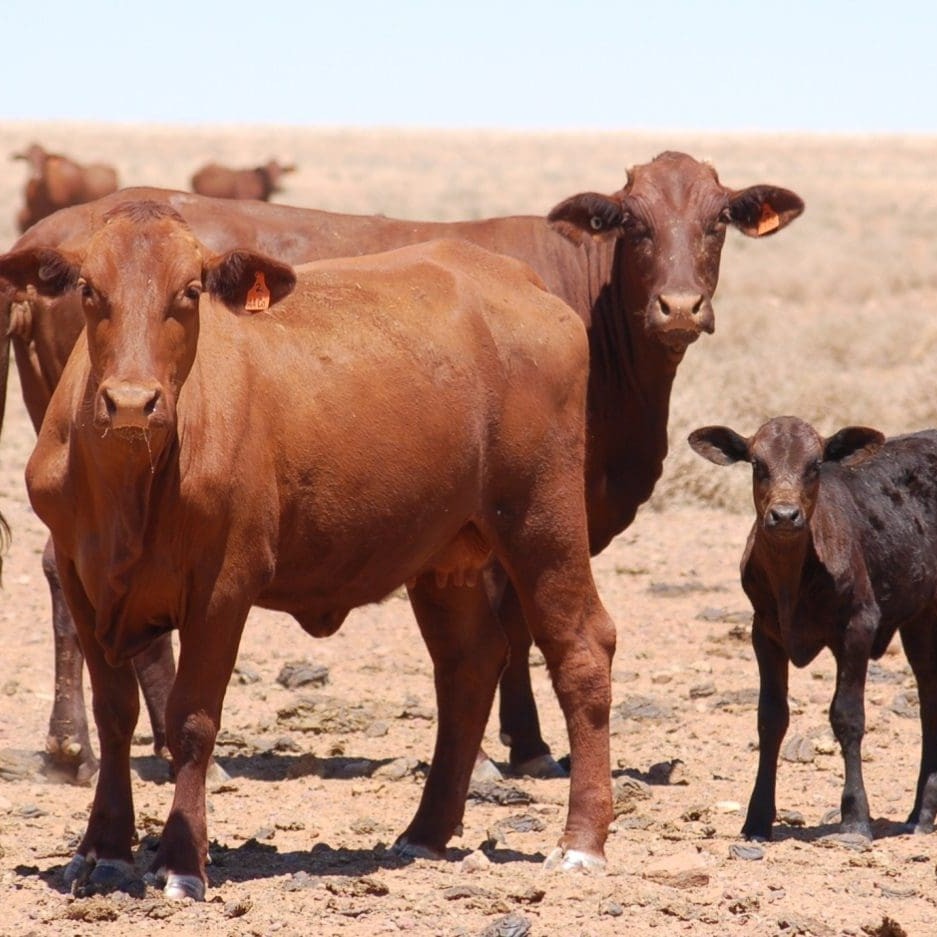A NEW bull buying guide launched during last week’s Angus Australia annual conference in Wagga is designed to assist northern beef producers achieve the best possible outcomes from Angus bulls in arid tropical and semi-tropical environments.
While Angus herd bulls have gone into Central and Northern Queensland, the Northern Territory and northern parts of Western Australia for 20 years or more, that has happened with varying degrees of success, in terms of mortality rates, longevity and other performance indicators.
 One of the catalysts for the research work that has led to the creation of the guide was a visit by Angus Australia about ten years ago to the Australian Agricultural Co’s Headingly Station, northwest of Mt Isa, where very mixed results were being achieved in terms of mortality and bull performance with early Angus bull crossbreeding programs.
One of the catalysts for the research work that has led to the creation of the guide was a visit by Angus Australia about ten years ago to the Australian Agricultural Co’s Headingly Station, northwest of Mt Isa, where very mixed results were being achieved in terms of mortality and bull performance with early Angus bull crossbreeding programs.
Consultant Ben Hill was later recruited by Angus Australia to learn more about the key factors influencing performance in northern grazing environments, starting an information-gathering process that has ultimately led to this month’s launch of the northern buyers guide.
The new decision support system provides simple best-practise management options and helpful information that can be adopted by northern buyers of Angus bulls to lift overall performance.
“The project has cost a considerable amount of money, but we think it is a sound investment in the future, creating a convenient on-line information resource for future northern bull buyers,” Angus Australia’s breed development and innovation manager Carel Teseling said.
The strong momentum being seen in Meat Standards Australia grading numbers in northern areas, together with a desire to modify genetics to broaden market flexibility following the collapse of live exports, has further driven the need for such an advisory product.
The on-line guide allows northern producers using, or planning to use Angus bulls to go onto the website, and answer a few basic questions about their location and production system, prompting a specific set of information to be generated to suit each application.
The information tool was developed as an MLA donor company project.
Extensive surveys provide background
Providing a strong background to the compilation of the northern bull buyers’ guide has been extensive survey work carried out with both northern commercial bull buyers, and southern Angus bull breeders servicing those markets.
Project officer Ken Bryan conducted 37 face-to-face interviews with Angus bull buyers from Broome in northern WA across the NT/Central Australia region, and the northern, central and southern parts of Queensland.
Similarly, 20 seedstock producers who have previously supplied bulls into the northern market were interviewed in Victoria, NSW, southern Queensland, and the southern regions of WA. Three feedlot operators were also asked to contribute to the process.
Seedstock producers were asked a wide range of questions including subjects like background feeding, vaccination protocols, and any other processes applied to prepare a bull to go into northern environments.
From start to finish, the interview process with both buyers and breeders took close to 12 months.
One of the important signals to emerge from the survey work was that there was often evidence of both satisfactory and poor results, even within the same region or environment.
“The majority of producers interviewed are having good success using Angus bulls in these regions. Those producers that have not been as successful may improve the performance through the adaption of some simple management practices,” Mr Bryan said.
Keys to achieving good outcomes
 One of the main signals to emerge was a need for buyers to look after the bulls, particularly during the first 18 months after arrival, nutritionally and management wise.
One of the main signals to emerge was a need for buyers to look after the bulls, particularly during the first 18 months after arrival, nutritionally and management wise.
In more extensive operations, that might include pulling out the poorest 20pc of bulls in a multiple sire paddock, or shifting those bulls into the heifer paddock, so that when a dry period approached, they would be likely to be the first group supplemented.
Another important factor was the age of bulls being purchased.
“If the northern producer wants to use those bulls three months after they arrive, they need to buy more mature bulls,” Mr Bryan said. “But in saying that, it is better for the animal to buy them as a 12-month-old and allow them to adapt for six to nine months, before being put to work.”
Equally, bulls grown-out too big in a southern environment ran the risk of problems if put straight out with cows in a northern environment.
“It’s a balance among a wide range of variables, and the best we can do is to get buyers to understand the best practise principles that are likely to give the best possible outcome,” Mr Teseling said.
Feeding history prior to purchase was another significant influence found in the survey.
Buyers taking bigger numbers of bulls out of the paddock were by-and-large achieving better results than those bulls going through the auction ring, where they tended to be supplementary fed more heavily before sale.
For buyers in ticky areas, tick-fever vaccination is a must. Three day sickness can also have an effect on fertility, particularly semen morphology through spike in temperature. Pre-delivery vaccination is regarded as ‘beneficial’ rather than ‘crucial’ for bulls entering endemic three-day areas.
The impact of mickey bulls on young introduced bulls was another factor which came under scrutiny.
“In those less-controlled areas where there are still populations of mickey bulls present, taking young southern Angus bulls and dropping them in a paddock where mickeys are present means they are likely to struggle,” Mr Bryan said.
“From the survey results, it appears mickeys are still a particular problem in the Kimberley, where there is a lot of open rangelands country.”
Some of the features of the website advice:
The on-line advice package starts with a Google map of northern Australia, where the producer ‘pinpoints’ their property location.
This starts a sorting process, prompting a tailored short series of questions designed to deliver a package of information which closely matches local bull stressors, both geographic and management-driven.
Based on the geographic location chosen, the first set of questions covers management and environmental circumstances.
Using a tick-free location in the southern NT as an example, some of the prompted questions included:
- How long after the bulls arrived will they be put to work
- The season of relocation
- The number of bulls used as a percentage of the female breeder herd they are going into
- Indicus content in the breeding herd, and
- The presence and/or density of mickey bulls.
Each of these questions is linked to a second, short series of questions, designed to further drill-down into the particular application. The answers to these questions will affect the recommendations delivered by the program. The entire question process should take no longer than 15 minutes, Mr Bryan said, but was time well spent, given the specialised and localised responses given.
To use the package, each user is asked to establish an account, which has two purposes:
- It allows the user to come back at some future time, and change their existing variables, i.e. controlled mating for open mating.
- It allows a user to add a second or third breeding property, where conditions and management circumstances might vary from the first. This way, different customised models can be applied to different parts of the enterprise.
Mr Bryan said the suite of advice provided in the program had come from a wide variety of sources, including state and federal agriculture departments, vets and other local advisors, other research bodies and the interview process itself.
Mr Teseling said even though Ken Bryan’s contribution to the project was now drawing to a close, the buying guide would continue to be refined, on the basis of feedback from users and further extension information.
The initial best practise recommendations a producer is provided with can be printed-out from the website, but additionally there are a series of PDFs providing additional useful information such as selection protocols for issues like structural soundness, long-distance transport legislation, and other topics.
- The bull buying guide can be accessed via the Angus Australia website. Click here to view.
